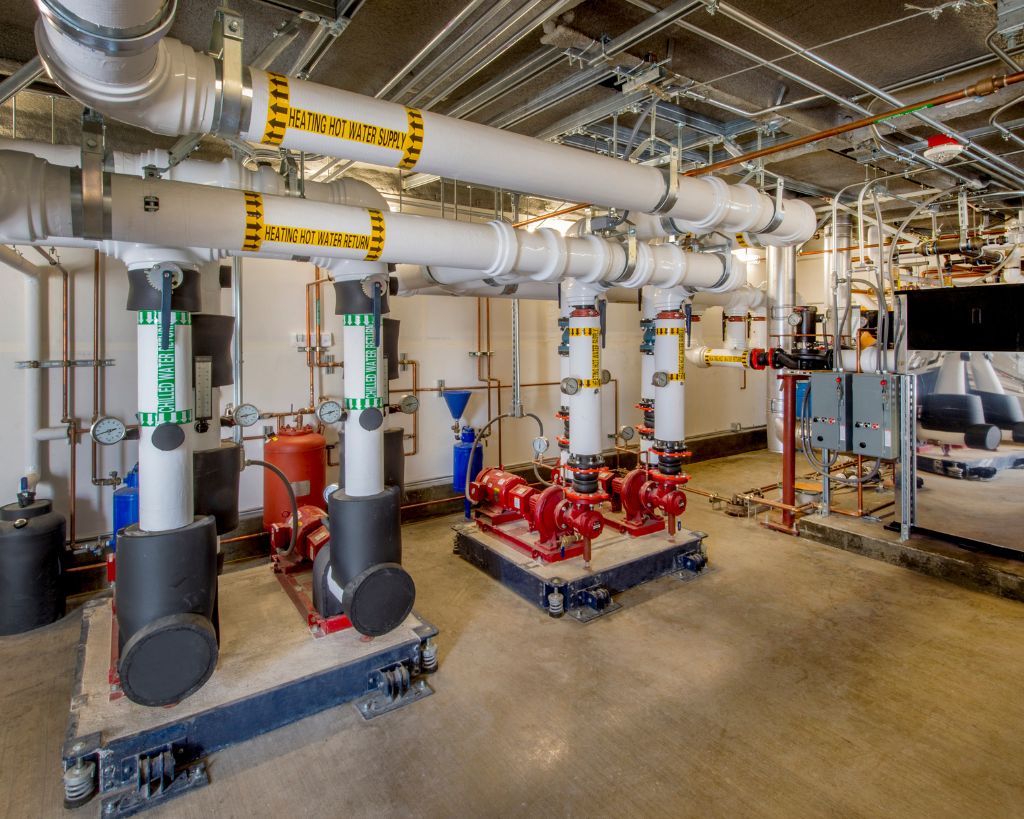Introduction
Many commercial properties face the same reality–aging HVAC systems that will soon require significant financial investment. This is never a comfortable position, and, to be candid, almost no one plans for this expenditure. If you are in this position, I would encourage you to consider it an opportunity to improve what works and fix what doesn’t. For this article, we will use boilers to illustrate a few best practices. The concepts of redundancy and efficiency apply to all HVAC designs and should be evident in the following example.
Sometimes it’s easier to step outside of your own situation and participate in a thought experiment. Let’s say you are the Superintendent of a high school with 500 students. Your school is in a region with harsh and often unpredictable winter weather. Around town, they refer to the high school as “the new school” because, to the townsfolk, it was just built, and has since been a shining example within the community. You know in your gut, however, 1995 was a long time ago. And, judging by the amount you’ve been spending on repairs lately, your boiler room will require some attention, despite being “brand new.” For all you know, that boiler will give up the ghost on the coldest day of the year, and you’ll have to send 500 students home at 11:30 AM on a workday. You’ll have to coordinate with parents, organize buses, and cancel school for who knows how long…a headache, to say the least.
So, you have a thirty-year-old boiler, a duty of care for 500 students, and the financial responsibility of balancing a limited budget with a desire to make the best long-term decision. What are your options?
Redundancy
The obvious solution to the problem above is to have a backup boiler. To be fair, it is likely that any school building built in the last thirty years actually has two boilers, for just such an occasion. However, many times, these facilities are already running on just one and have been for some time–often without their knowledge. Many commercial properties, however, have no such redundancy. So, the first step: if you only have one boiler, it’d be best to have two.
In schools, typically, there are two interlocked boilers. If the building requires 1 million BTUs of heat, there will be two 1 million BTU boilers. Usually, each takes turns running to ensure an even run time. And if one goes down, the other takes over. This system is robust, reliable, and, in many cases, horribly inefficient.
Efficiency
“If it ain’t broke, don’t fix it.” Sage advice. You could replace your one old, inefficient boiler with two new, inefficient boilers. And, honestly, this is a viable solution for the least amount of money. Understandably, if you’re strapped for cash, this may be the best option to improve your boiler room–and it would not be an insignificant improvement. However, we should consider another option: two new high-efficiency, modulating boilers.
High efficiency simply means as our boilers burn fuel, we extract more BTUs for the same amount of fuel. A standard efficiency boiler–say 80% efficient–would give you 800,000 usable BTUs for every 1,000,000 produced. A 90% efficient boiler gives you 900,000 BTUs for the same fuel spent. All things being equal, the higher efficiency boiler is better, especially across a twenty to thirty-year time frame.
Modulating simply means the boiler changes its output dynamically to meet the demand. In the previous example, even supposing we solved our redundancy problem, when the building gets cold, and the thermostat calls for heat, that 1 million BTU boiler bangs on at full throttle. You get all 1 million BTUs at once. How this plays out, as any maintenance personnel can tell you, is constant banging on and off. Zero to 1 million to zero. Zero to 1 million to zero. All winter long. Sometimes the building does not require much to raise the temperature a few degrees. A boiler that doesn’t modulate doesn’t care. All it can do is turn on and off. A modulating boiler will start with minimal output and increase that value as needed.
Best of Both
“That all sounds great!” you say. You’re sold on redundancy, you love efficiency. But there’s one thing you love more–sleep at night. How do we set up a boiler room that maximizes redundancy and efficiency? Consider the following: we replace each of those standard efficiency 1 million BTU boilers with three smaller super high-efficiency, modulating boilers. Then we double it. We have six small boilers in two groups of three interlocked to work as one. Not only is our fuel consumption highly efficient, but we would need three failures to be down to the equivalent of one previous boiler. In the original example, if we lose one boiler, we lose all redundancy. Here, if we lose one boiler we still have 5/3 capacity. We would need six failures to have no heat.
Conclusion
If you have an aging boiler or any system, for that matter, you will be forced to make a decision. It is inevitable. Think of these options as good, better, and best. Obviously, the best will require the highest upfront investment but will likely become the least expensive across a twenty to thirty-year lifetime. Here is the key: the decision can either be reactive or proactive. Our advice is to make the best long-term decisions. Making an informed decision leads to a quality installation. A quality installation, paired with a solid maintenance strategy, means we might not have to talk about this for another thirty years.



